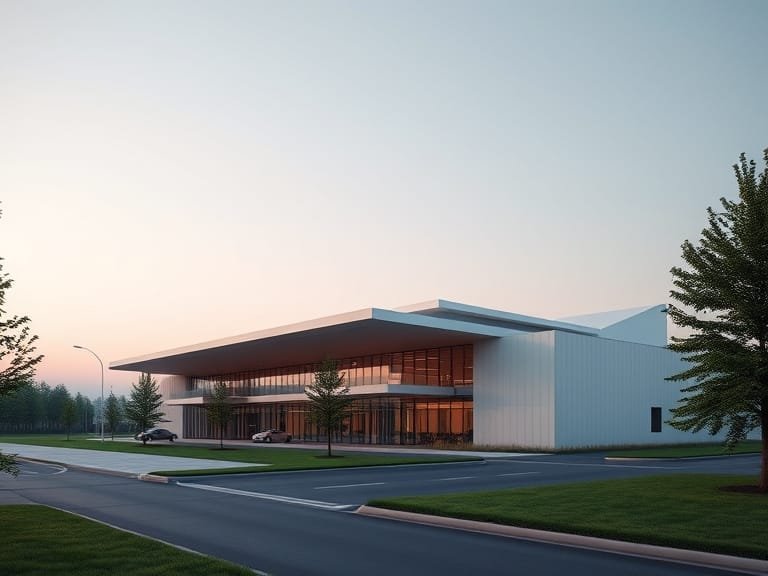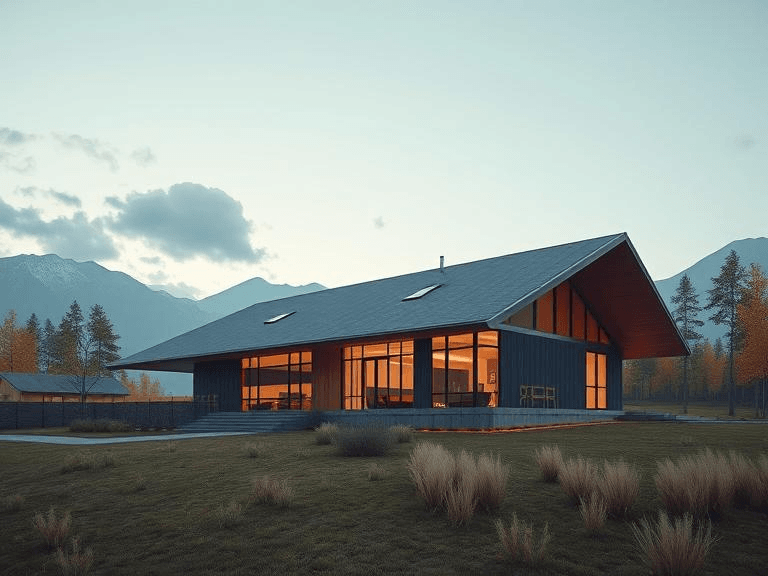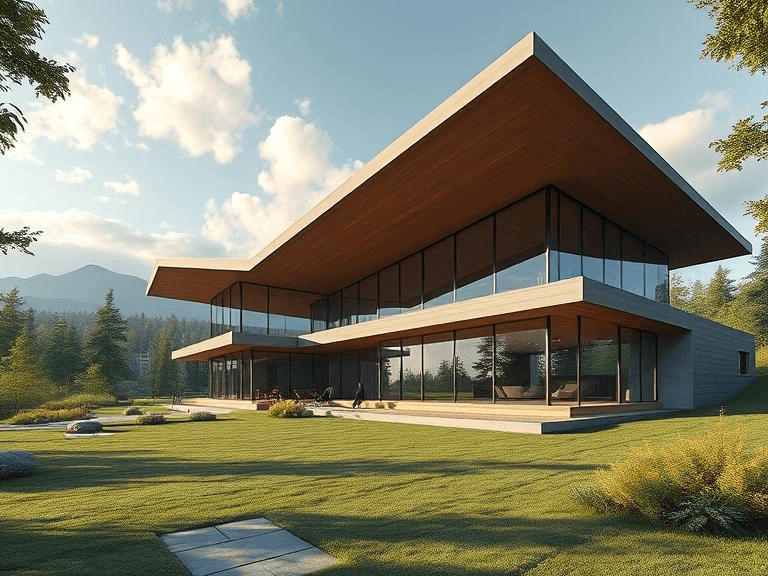
Flat roofing has emerged as a practical and effective solution for various commercial buildings, especially in urban environments such as Toronto. Characterized by its minimal slope, flat roofing systems are designed to provide an adequate surface for water drainage while maximizing usable rooftop space. This type of roofing often employs materials such as modified bitumen, TPO, and EPDM, each offering distinct advantages tailored to specific business needs.
One of the primary advantages of flat roofing is its versatility. Unlike pitched roofs, flat roofs can be utilized for a multitude of applications. They can serve as additional outdoor spaces, such as gardens or terraces, and provide easy access for maintenance and equipment installation. These features are particularly beneficial in densely populated cities, where square footage is at a premium. Furthermore, the ability to easily install rooftop HVAC units, solar panels, or green roofs on flat surfaces makes them a favored choice among commercial property owners.
In addition to practicality, flat roofing is also admired for its aesthetic appeal. Smooth and uniform surfaces can enhance the modern architectural appearance of buildings, contributing positively to the overall style of urban landscapes. The variety of materials available for flat roofing also allows for customization, enabling businesses to choose options that complement their branding while ensuring functionality.
Moreover, flat roofing systems tend to require less material compared to traditional pitched roofs, often resulting in lower installation costs. This economical benefit, combined with its flexibility and modern aesthetic, contributes to the increasing popularity of flat roofing in Toronto’s commercial sector. As cityscapes continue to evolve, the preference for flat roofing solutions is likely to play a significant role in shaping future architectural developments.
Understanding Different Flat Roofing Materials
Flat roofing systems are popular in commercial buildings due to their practicality and cost-effectiveness. Various materials are available, each with unique characteristics, advantages, and disadvantages. A thorough understanding of these options is essential for making an informed choice that meets both structural and budgetary requirements.
One of the most common materials is EPDM (Ethylene Propylene Diene Monomer). This synthetic rubber roofing is known for its durability and weather resistance, making it ideal for extreme climates. Its lifespan can exceed 25 years with proper maintenance, and it reflects sunlight, which helps in energy conservation. However, EPDM can be prone to punctures and may require professional installation for optimal results.
TPO (Thermoplastic Olefin) is another widely used flat roofing material. It offers a balance of affordability and environmental benefits, being reflective and reducing cooling costs. TPO membranes are relatively lightweight and easy to install, which can lower labor costs. However, some manufacturers have raised concerns about long-term durability, and its performance can vary significantly based on installation practices.
Another option is PVC (Polyvinyl Chloride), known for its robustness and resistance to chemicals and fire. PVC roofing can last upwards of 30 years and features a white reflective surface that helps to keep buildings cool. Nonetheless, PVC tends to be more expensive upfront, and its manufacturing process has raised environmental concerns.
Lastly, modified bitumen roofing combines the durability of traditional asphalt with the flexibility of modern materials. It is applied in layers and can be self-adhered or torch-applied, providing versatility. While modified bitumen is very weather-resistant, it does have a shorter lifespan compared to synthetic alternatives, typically around 20 years.
Each roofing material varies in performance, cost, and longevity, and selecting the right one depends on multiple factors, including climate, budget, and building requirements. Evaluating these options through a thorough understanding aids in making sound decisions for commercial flat roofing in Toronto.
Climate Considerations in Toronto
Toronto experiences a diverse climate characterized by cold winters, warm summers, and significant precipitation throughout the year. This variability poses unique challenges when selecting the best commercial flat roofing systems. The region’s temperature fluctuations can lead to expansion and contraction of roofing materials, which is a critical factor to consider when designing a roofing system.
During the winter months, Toronto often faces heavy snowfall, with roofs needing to support substantial snow loads. A commercial flat roofing system must be engineered to manage these stresses, as improperly chosen materials could result in structural compromises. It is imperative that the roofing system has adequate insulation and a robust design to minimize the risk of snow accumulation, which can contribute to leaks and eventual failure of the roof.
In addition to snow, Toronto also experiences heavy rainfall, particularly during the spring and summer months. Roofs are therefore required to have proper drainage systems in place to prevent water pooling, which can lead to significant repair issues over time. The chosen roofing material should also be waterproof, with resistant features to combat the effects of moisture and standing water that can deteriorate roofing systems prematurely.
Furthermore, it is essential to select materials with resilience against UV rays, which can degrade roofing materials over time. The exposure to sunlight during the warmer months necessitates the use of reflective materials that help mitigate excessive heat buildup, contributing to energy efficiency within commercial buildings.
In selecting the appropriate commercial flat roofing for properties in Toronto, it is crucial to take into account these climate factors. A well-informed decision will help ensure longevity and performance, providing peace of mind for property owners and managers.
Building Regulations and Compliance
When undertaking commercial flat roofing projects in Toronto, it is crucial to familiarize oneself with the local building codes and regulations that govern construction practices in the area. The City of Toronto has established specific requirements designed to ensure the safety, durability, and environmental sustainability of roofing systems. Adhering to these regulations not only ensures compliance but also helps to prevent potential legal issues that could arise from improper installations or modifications.
Before commencing any roofing project, obtaining the necessary permits is essential. In Toronto, permit applications must comply with the Ontario Building Code, which provides standards for construction practices, material specifications, and safety measures. This code includes guidelines on structural integrity, weather resistance, and energy efficiency, which are particularly relevant for flat roofing systems. It is advisable to consult with a professional architect or contractor familiar with these regulations to ensure that your project aligns with all applicable codes.
In addition to the Ontario Building Code, commercial flat roofing projects must also comply with Toronto’s Municipal Code. This code includes additional bylaws and standards that may pertain to zoning, environmental impacts, and specific neighborhood requirements. Consideration of these factors is necessary when planning layout and materials for your flat roof. Engaging with local authorities during the planning phase can provide valuable insights and facilitate a smoother approval process.
Furthermore, it is essential to consider safety standards set by organizations such as the Occupational Safety and Health Administration (OSHA). Compliance with these safety standards protects workers and ensures a safe working environment during the roofing installation or repair processes. Understanding and adhering to both municipal and provincial regulations are critical steps that can help avoid project delays and additional costs.

Energy Efficiency and Sustainability
In today’s environmental landscape, the choice of roofing materials for commercial buildings is critical not only for energy efficiency but also for sustainability. Utilizing energy-efficient roofing solutions can play a significant role in reducing overall energy consumption, particularly in regions like Toronto, where seasonal temperature variations can lead to increased heating and cooling demands.
One prominent approach to sustainable roofing is the adoption of cool roofing systems. Cool roofs reflect more sunlight and absorb less heat than standard roofs, which can lead to lower roof temperatures and reduce the need for air conditioning during the warmer months. This ultimately contributes to decreased energy costs and enhances the longevity of the roofing material itself. Furthermore, the integration of reflective coatings can significantly minimize heat absorption, thus benefiting both the environment and the building’s operational efficiency.
Another essential aspect of energy efficiency in commercial flat roofing is proper insulation. Insulation acts as a barrier to heat flow, making it an integral component in maintaining indoor temperatures. By incorporating high-quality insulation materials, building owners can achieve a marked reduction in energy usage for heating in winter and cooling in summer. This is especially pertinent for commercial buildings in Toronto, where the climate necessitates effective insulation to combat extreme temperatures.
Sustainable materials also offer significant advantages. Many modern roofing options are made from recycled or environmentally friendly products. Choosing such materials not only minimizes the carbon footprint but can also contribute to qualifying for green building certifications, which are increasingly important in the construction industry. Furthermore, opting for energy-efficient roofs can lead to federal or local incentives, making the initial investment more financially viable.
In conclusion, when selecting commercial flat roofing in Toronto, it is imperative to consider energy efficiency and sustainability. Adopting cool roofing systems and ensuring proper insulation are effective strategies to enhance the performance of roofing systems, reduce energy costs, and contribute positively to the environment.
Choosing a Qualified Roofing Contractor
When it comes to selecting a qualified roofing contractor for commercial flat roofing in Toronto, several key factors must be considered to ensure you are making an informed decision. The experience of the contractor is paramount; it is advisable to choose a company with a proven track record in handling flat roofing projects similar to yours. This not only assures quality workmanship but also instills confidence that they are familiar with the local regulations and specific weather conditions that can affect roofing materials and installation practices.
Licensing is another critical element in your selection process. A reputable roofing contractor should hold the necessary licenses to operate in Toronto, ensuring compliance with local laws and standards. This serves as a safeguard against hiring unqualified personnel who may lack the experience needed to perform the job successfully. Additionally, it is important to confirm whether the contractor possesses adequate insurance coverage. Proper insurance protects you from liability should any accidents occur during the roofing project, thereby providing peace of mind during the entire process.
Another valuable resource in your search is customer reviews. Online platforms and industry-specific directories often provide insight into the experiences of previous clients. Positive feedback can indicate a contractor’s reliability and quality of work, while negative reviews can serve as a warning sign. Stepping into direct communication with past customers can also offer invaluable insights regarding the contractor’s punctuality, professionalism, and overall service. This groundwork not only helps in filtering potential candidates but also assists you in making a well-rounded choice.
In summary, selecting the right commercial flat roofing contractor in Toronto requires careful consideration of their experience, licensing, insurance, and customer feedback. By taking these factors into account, you will be better positioned to choose a contractor who can deliver high-quality roofing services tailored to your specific needs.
Cost Factors and Budgeting
Understanding the cost associated with commercial flat roofing in Toronto involves evaluating multiple factors that contribute to the overall expenditure. The primary considerations include material selection, labor costs, and ongoing maintenance expenses. Each element plays a pivotal role in determining the total investment required for a flat roofing project.
Material selection is often the first and most significant cost factor. Different materials, such as EPDM, TPO, or modified bitumen, come with varied price points and durability profiles. For instance, while EPDM is known for its affordability and efficiency, TPO often offers superior energy efficiency but may command a higher initial investment. Evaluating these materials against the specific needs of your building will help refine your budget.
The next critical aspect is labor costs. In Toronto, labor rates may fluctuate based on market demand, the complexity of the installation, and the contractor’s experience. Engaging a well-established roofing contractor may incur higher upfront costs, but their expertise can lead to better craftsmanship and potentially lower long-term maintenance expenses.
Additionally, maintenance should not be overlooked when budgeting for flat roofing projects. Regular inspections and timely repairs are essential to extending the lifespan of the roof and avoiding unexpected costs down the line. Allocating a portion of your budget for maintenance can ensure that you are prepared for any necessary services, keeping your roof in optimal condition.
To optimize your budgeting process, consider obtaining multiple quotes from various contractors. This step will not only provide a clearer understanding of the prevailing market rates but also offers options that can fit diverse financial plans. By carefully evaluating cost factors associated with materials, labor, and maintenance, you can make informed decisions that align with your budgetary constraints, ultimately leading to a successful flat roofing investment.
Maintenance and Longevity of Flat Roofs
Maintaining commercial flat roofs is crucial to extending their lifespan and ensuring their performance over time. Unlike pitched roofs, flat roofs require regular upkeep to prevent water accumulation and other issues that could lead to costly repairs. Routine inspections play an essential role in identifying potential problems early, allowing for timely interventions that can substantial improve the roof’s durability.
Property owners should implement a regular inspection schedule, ideally bi-annually, to monitor the condition of their flat rooftops. During these inspections, look for signs of wear, such as cracks, blisters, or pooling water. Addressing these issues promptly can prevent further damage and costly repairs in the future. Additionally, it is essential to examine the seams and flashing, as these areas are particularly susceptible to leaks and degradation.
Cleaning is another critical aspect of flat roof maintenance. Accumulated debris such as leaves, dirt, and branches can trap moisture, leading to mold growth and material deterioration. Regularly clearing these elements not only keeps the roof in good condition but also enhances the overall aesthetics of the building. Ideally, cleaning should be performed after harsh weather conditions, such as strong winds or storms, to ensure that no debris is left behind to cause damage.
Addressing minor repairs immediately can significantly prolong the life of commercial flat roofs. For instance, if a small crack is detected, a simple sealant application can prevent it from expanding into a larger problem. It is advisable to keep a maintenance log to track inspections, repairs, and cleaning activities, providing an organized overview of the roof’s condition over time. By adhering to these maintenance practices and being proactive about minor issues, property owners can enhance the longevity and performance of their flat roofs significantly.
Conclusion and Final Thoughts
In the process of selecting the best commercial flat roofing system in Toronto, several key elements must be considered to ensure the longevity and effectiveness of the roofing solution. First and foremost, the choice of roofing material is crucial. Various options such as modified bitumen, EPDM, TPO, and PVC provide distinct advantages and disadvantages, and evaluating these based on the specific needs of the property is essential. Durability, climate adaptability, and insulation properties should form the basis of this selection process.
Another critical factor is the selection of a qualified roofing contractor. A skilled contractor not only brings technical expertise but also a wealth of experience in managing local building codes and regulations. Hiring a reputable contractor ensures that the installation meets industry standards, reducing the likelihood of future issues. It is advisable to seek recommendations, read reviews, and verify credentials when considering roofing professionals in Toronto.
Additionally, implementing a proactive maintenance strategy is fundamental to the success of any flat roofing system. Regular inspections and timely repairs can significantly extend the life of the roof and prevent costly damages. Business owners must be diligent in monitoring the condition of their roofs, particularly after extreme weather events, to address any potential problems before they compound.
Ultimately, investing time and resources into the careful selection of roofing materials, contractors, and maintenance practices will yield benefits that extend beyond immediate functionality. A well-chosen commercial flat roofing system enhances property value, provides energy efficiency, and ensures safety and comfort for building occupants. By prioritizing these elements, property owners in Toronto can achieve successful outcomes for their flat roofing projects.


